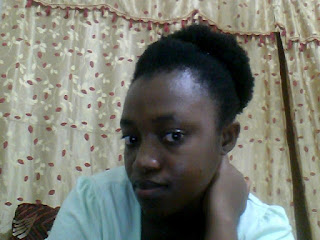What Is Your Hair Texture?
Hair has been the subject of this blog for almost 7 years and to think we would have mastered our hair by now Lol.
What Is hair texture? Each of us is unique with a peculiar hair texture. We don't carry the same genetic traits hence regardless of any hair typing system, your hair is still unique and should be treated as such.
There have been a number of hair typing systems but the most used and popular one is the one by Oprah's stylist, Andre Walker. Almost every new person on a healthy hair quest would have read about type 3A, to 4C. However, determining your hair texture is a different ball game.

Hair texture is the measure of the circumference of the hair strand itself. Professionals classify the texture of hair as being "coarse" (Thick), "fine", or "medium".
Width is not how the hair feels but describes the thickness of each individual strand of hair. The comparison is typically to a piece of thread. If your hair is fine, it’s thinner than the thread, medium hair is usually the same width and thick or coarse strands are thicker than the piece of thread.
Fine natural hair:
•Doesn’t hold styles well
•Can become weighed down with heavy products, causing the hair to look stringy
•Can look thin
•Can break easily because it’s fragile
Medium Hair
Medium hair is the most common hair type and often covers the scalp very well. This hair texture is not as fragile as fine hair and can be manipulated into styles easily. Structurally, medium textures usually have two layers – the cortex and cuticle – and may contain the medulla.
Medium natural hair:
• Holds styles fairly well
• Usually looks thick and covers the scalp well
• Is not as prone to breakage as fine hair
Thick or Coarse Hair
This hair texture is strong because structurally it contains all three hair layers – the cortex, cuticle and medulla. The medulla, the innermost layer of the hair shaft is pretty much a series of empty spaces. It’s an area filled mostly with air and protein. This hair texture usually takes longer to dry than others, and can be resistant to various chemical treatments. It can tolerate heat well and resist breakage better than the fine or medium hair.
Thick natural hair:
• Appears full
• Holds styles well
• Can tolerate higher amounts of heat
• Can be resistant to hair colouring and chemical relaxers
What is your hair texture?
Source: http://www.curlynikki.com/2012/08/understanding-hair-texture.html?m=1
What Is hair texture? Each of us is unique with a peculiar hair texture. We don't carry the same genetic traits hence regardless of any hair typing system, your hair is still unique and should be treated as such.
There have been a number of hair typing systems but the most used and popular one is the one by Oprah's stylist, Andre Walker. Almost every new person on a healthy hair quest would have read about type 3A, to 4C. However, determining your hair texture is a different ball game.

Hair texture is the measure of the circumference of the hair strand itself. Professionals classify the texture of hair as being "coarse" (Thick), "fine", or "medium".
Width is not how the hair feels but describes the thickness of each individual strand of hair. The comparison is typically to a piece of thread. If your hair is fine, it’s thinner than the thread, medium hair is usually the same width and thick or coarse strands are thicker than the piece of thread.
Fine natural hair:
•Doesn’t hold styles well
•Can become weighed down with heavy products, causing the hair to look stringy
•Can look thin
•Can break easily because it’s fragile
Medium Hair
Medium hair is the most common hair type and often covers the scalp very well. This hair texture is not as fragile as fine hair and can be manipulated into styles easily. Structurally, medium textures usually have two layers – the cortex and cuticle – and may contain the medulla.
Medium natural hair:
• Holds styles fairly well
• Usually looks thick and covers the scalp well
• Is not as prone to breakage as fine hair
Thick or Coarse Hair
This hair texture is strong because structurally it contains all three hair layers – the cortex, cuticle and medulla. The medulla, the innermost layer of the hair shaft is pretty much a series of empty spaces. It’s an area filled mostly with air and protein. This hair texture usually takes longer to dry than others, and can be resistant to various chemical treatments. It can tolerate heat well and resist breakage better than the fine or medium hair.
Thick natural hair:
• Appears full
• Holds styles well
• Can tolerate higher amounts of heat
• Can be resistant to hair colouring and chemical relaxers
What is your hair texture?
Source: http://www.curlynikki.com/2012/08/understanding-hair-texture.html?m=1


Comments
Post a Comment
Speak your mind; I love to hear from you!